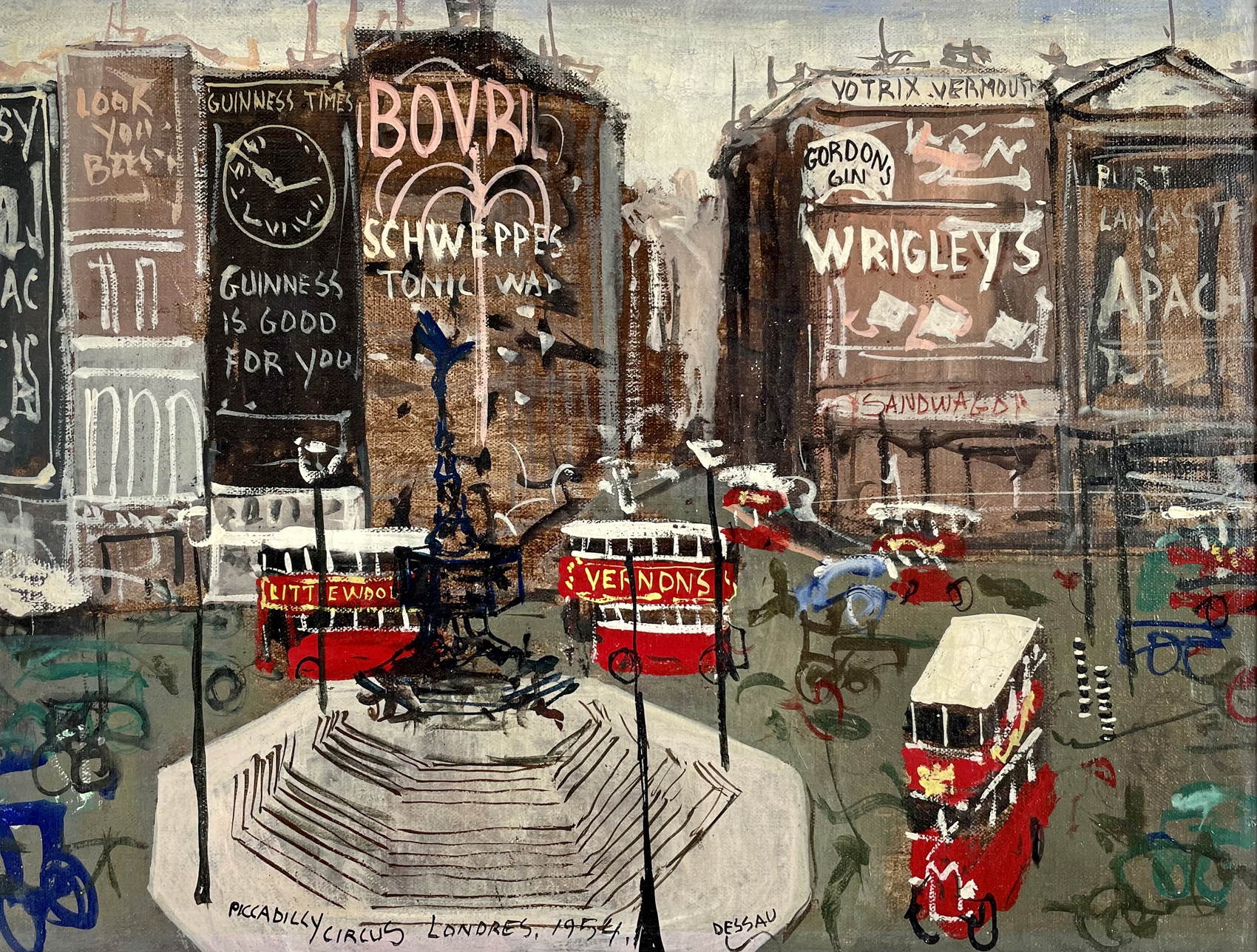

Paul-Lucien Dessau was born in London in 1909. Dessau was a British artist best known for the paintings he produced during the Second World War whilst serving as a fireman in London
Paul Dessau was the third of four children. His father died when he was young and he did not do well at school. On leaving school he joined a commercial art studio as an apprentice, mostly cataloguing work for a local department store. Dessau left to start his own design studio with his brother Bernard, who was also known as Dewsbury Dessau. Whilst continuing to work, Paul Dessau began to study part-time at the Hornesy School of Art and then took anatomy classes at the Central School of Art and Design and eventually began to show works at various London galleries.
At the start of the Second World War Paul Dessau, and his brother Bernard, joined the Auxiliary Fire Service which in 1941 became the National Fire Service. A number of artists including Dessau joined the NFS and a firemen artists’ committee was formed which included Bernard Hailstone, Leonard Rosoman, Norman Hepple and Robert Coram. The NFS agreed to assist the artists as long as their fire-fighting duties were not adversely affected by the War Artists Advisory Committee. The WAAC purchased two paintings by Dessau. In 1941, the Firemen Artist Group attracted some 64,000 people in a month to the first of twenty exhibitions they were to hold at the Cooling Galleries. In addition, four firemen artist exhibitions were held at the Royal Academy and then toured around Britain during the war whilst a further two exhibitions toured America and Canada.
Several works by Dessau featured in these wartime exhibitions including And So To Bed, showing a carefully laid-out uniform of an auxiliary fireman, and several fine portraits including one of Divisional Officer Blackstone, who was awarded the George Medal for his actions after a fire station was bombed during the Blitz.
After the war Dessau, and his wife whom he had married in 1935, moved out of London and settled in the country, where he pursued a career as a successful portrait painter. He was also an accomplished, and largely self-taught, pianist.